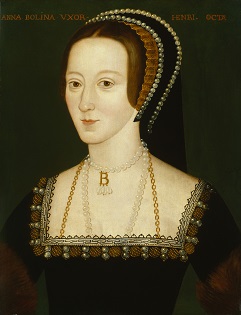
Word of the Day: Royal
Paul Schleifer
Royal is an adjective that means “of or related to a king, queen, or other sovereign.” There are also noun forms of royal, but the chief one, royals, is really a substantive adjective and is used mainly by the British to refer to their royal family. According to www.etymonline, royal comes into English “from Old French roial ‘royal, regal; splendid, magnificent’ (12c., Modern French royal), from Latin regalis ‘of a king, kingly, royal, regal,’ from rex (genitive regis) ‘king,’ from PIE root *reg- ‘move in a straight line,’ with derivatives meaning ‘to direct in a straight line,’ thus ‘to lead, rule,’ first appearing in the 13th century.” According to the OED, it first appears c. 1380 in the poem Cleanness, a poem in Middle English by the author of Sir Gawain and the Green Knight: “Bolde burnez were þay boþe, wyth berdles chynnez, Royl rollande fax, to raw sylk lyke.”
I think royal is a good choice for today’s Word of the Day because today is the wedding of Prince Harry of England and the American Meghan Markle. Henry Charles Albert David, the Duke of Sussex, is the younger son of Prince Charles and Princess Diana, and he is sixth in the line of succession to the English throne. Now, I’m not sure that’s such a big deal because the sovereign of England really does not do very much anymore. On the other hand, being a member of the royal family means that one is entitled to millions of pounds just for having been born. Meghan Markle is a former actress and calligrapher, the daughter of an award winning, retired lighting director for shows such as Married… with Children.
If you Google the royal wedding, you’ll lots of information about the wedding, about Markle’s wedding dress, and how to watch the wedding on TV. In the USA, you can watch it on all the broadcast networks, on CNN, and on a host of other cable networks.
In honor of the wedding and of the day, I thought I would just share a few of the things that the royals have done on this day in history.
On this day in 1536, former Queen of England Anne Boleyn made an involuntary departure from her head at the Tower of London. She had been convicted by a court of treason, adultery, and incest, but her real crime was not providing a male heir for her former husband King Henry VIII. Henry really wanted a son to be his heir, but that didn’t work out too well. His one “legitimate” son, Edward, son of Jane Seymour (who died of post-natal complications two weeks after the birth of her son), did become king, but he died at the age of 16. Then his daughter Mary, offspring of Katherine of Aragon, the first wife, was on the throne for just five years. Then Anne Boleyn’s daughter Elizabeth was queen for 45 years, which may have been Anne Boleyn’s revenge. Still, she didn’t exactly get to see it.
Speaking of Elizabeth I, on this date in 1568, she had her cousin Mary, Queen of Scots, arrested and confined. Mary’s confinement would be kind of a permanent thing until Mary’s execution in 1587, almost 19 years later. Now, admittedly, Mary was a Roman Catholic, and she was used by Roman Catholics in England as a threat to Elizabeth’s throne since Elizabeth was a Protestant. And, again admittedly, Elizabeth did designate Mary’s son James as her heir, and he did succeed to the throne in 1603, which may have been Mary’s revenge. Still, she didn’t exactly get to see it.
On this date in 1662, Charles II authorized the Act of Uniformity of 1662. This act made the Book of Common Prayer, introduced by Charles II, mandatory for all worship in England. It was part of the Clarendon Code, four acts that banned other forms of Christian worship, forced ministers to sign a loyalty oath (which expelled some thousand ministers from the Church of England), forbade nonconformist ministers from coming within 5 miles of towns, and required all government officials to worship in the Church of England. Anyone who believes in separation of church and state might have some problems with the Clarendon Code.
On this date in 1749, King George II gave 500,000 acres of land in Ohio to the Ohio Company of Virginia. Part of the reason for this grant of land was to block French expansion into the Ohio Valley from modern-day Canada. Eventually, this move led to the French and Indian War, which may have claimed as many as 150,000 lives, though it did, ultimately, lead to the American Revolution and the expulsion of royal rule from what is now the United States of America.
Given all the wonderful things that have been done by the British royals, one might wonder why, in the United States, where we rejected the whole notion of a hereditary king, people get caught up in royal weddings. If one of the definitions of royal is “magnificent,” we should keep in mind that this magnificence is based upon the involuntary servitude of others, all those “commoners” who have to labor to provide the royals with everything they have.
The image is a photo of an anonymous painting of Anne Boleyn that can be found in the National Portrait Gallery. I wonder if Meghan Markle knew who Anne Boleyn was before she decided to marry into the British royal family.